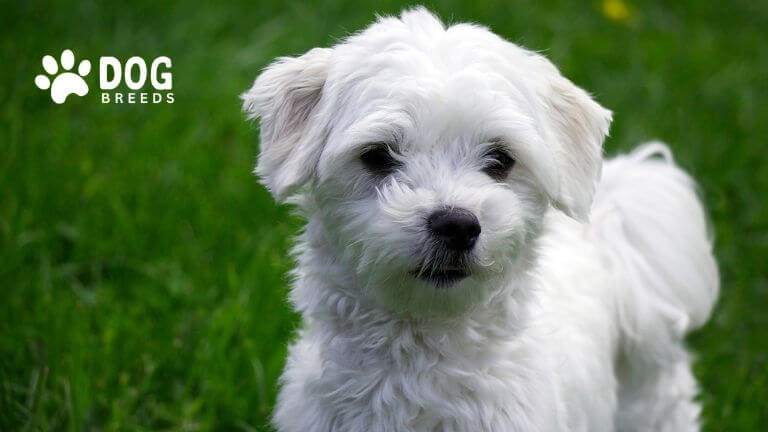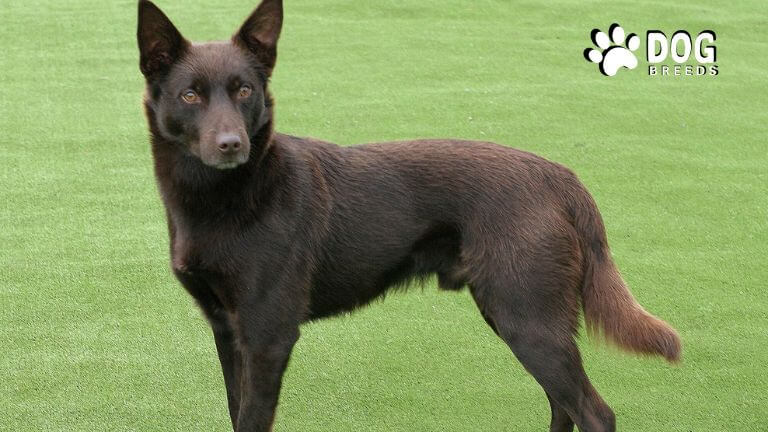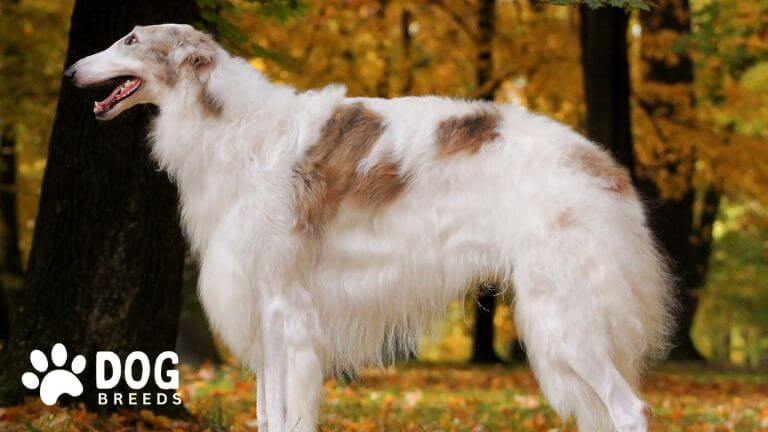Labradoodle Dog Breed: History, Traits & Care Guide
The Labradoodle is a popular designer dog breed created by crossing a Labrador Retriever with a Poodle. Known for its intelligence, friendliness, and adaptability, this breed has become a favored companion for families and assistance work. Its hypoallergenic coat and playful personality make it an ideal pet for many households.

History and Origins
The Labradoodle originated in the 1970s when Wally Conron, an Australian breeder, sought to develop a guide dog suitable for individuals with allergies. By combining the trainable Labrador Retriever with the low-shedding Poodle, he created a breed that excelled as an assistance dog. Since then, Labradoodles have gained global recognition for their versatility and unique charm.
Labradoodle Dog Breed Overview
| Category | Details |
| Origin | Australia (1980s) |
| Purpose | Originally bred as hypoallergenic guide dogs |
| Parent Breeds | Labrador Retriever and Poodle |
| Size | Medium to Large |
| Height | 14 to 24 inches (35 to 61 cm), depending on the Poodle parent size |
| Weight | 15 to 65 pounds (7 to 30 kg) |
| Coat Type | Wavy, curly, or straight; varies depending on genetics |
| Coat Colors | Cream, gold, red, chocolate, black, apricot, or a mix |
| Hypoallergenic | Yes (low-shedding, but not guaranteed for severe allergies) |
| Lifespan | 12 to 14 years |
| Temperament | Friendly, intelligent, sociable, and energetic |
| Exercise Needs | High; requires at least 30-60 minutes of exercise daily |
| Trainability | Very high; inherits intelligence and eagerness to please |
Physical Characteristics
Labradoodles come in various sizes depending on the Poodle parent:
- Standard Labradoodles: 50-65 pounds
- Medium Labradoodles: 30-45 pounds
- Miniature Labradoodles: 15-30 pounds
Coat Types
Labradoodles display a range of coat textures:
- Wavy fleece: Soft, loose waves
- Curly wool: Tight, curly coat resembling a Poodle
- Straight coat: More similar to a Labrador Retriever
Coat colors include cream, black, chocolate, apricot, and parti (a mix of colors). Generational differences (e.g., F1, F1b) influence appearance and coat type consistency.
Temperament and Behavior
Labradoodles are intelligent, social, and affectionate. Their key traits include:
- Family-oriented: They bond well with adults, children, and other pets.
- Energetic: Regular mental and physical stimulation is essential.
- Trainable: They quickly learn commands and excel in activities like therapy work.
Their playful nature, loyalty, and eagerness to please make them wonderful companions.
Care Requirements

Exercise
Labradoodles are active dogs that need daily exercise. Activities like:
- 30-60 minutes of walks or runs
- Playtime in the yard
- Swimming (a favorite for many Labradoodles)
Grooming
Grooming depends on the coat type:
- Wavy or curly coats: Brush 2-3 times a week to prevent matting.
- Straight coats: Weekly brushing is sufficient.
- Regular grooming appointments every 6-8 weeks maintain coat health.
Diet and Health
- Diet: High-quality dog food, adjusted for size and activity level.
- Common Health Issues:
- Hip dysplasia
- Progressive Retinal Atrophy (PRA)
- Allergies
Annual veterinary check-ups ensure early detection of health concerns.
Training and Socialization
Labradoodles are highly trainable. Start early with positive reinforcement techniques. Introduce them to various environments and people during puppyhood to foster confidence and reduce anxiety.
Living Environment
Labradoodles adapt well to various living conditions:
- Apartments: Suitable with adequate exercise.
- Houses with yards: Provide space for outdoor activities.
They thrive in environments where they receive consistent attention and stimulation.
Fun Facts and Variants
- Australian Labradoodles: Bred with additional breeds like the Cocker Spaniel, creating a slightly different lineage.
- Hypoallergenic Qualities: While not guaranteed, their low-shedding coats are less likely to trigger allergies.
- Therapy and Service Dogs: Labradoodles excel in roles helping people with disabilities or emotional challenges.
Tips for Potential Owners
- Reputable Breeders: Choose breeders who prioritize health and temperament.
- Rescue Options: Consider adopting from Labradoodle rescue organizations.
- Commitment: Be prepared for regular grooming and daily exercise.
Labradoodles are a joyful and loving addition to many families. Their unique blend of traits from Labradors and Poodles ensures they shine as companions, therapy animals, and beloved pets.
Conclusion
The Labradoodle is an extraordinary breed that combines the intelligence, loyalty, and friendliness of its parent breeds—the Labrador Retriever and the Poodle. Whether as a family companion, an energetic playmate, or a hardworking therapy dog, the Labradoodle adapts to a variety of roles with ease. Its hypoallergenic coat and sociable temperament make it an excellent choice for households seeking a versatile, loving pet.
Caring for a Labradoodle requires attention to its exercise, grooming, and training needs, but the rewards of having such a devoted and joyful companion are immeasurable. Whether you’re adopting from a shelter or choosing a reputable breeder, bringing a Labradoodle into your life is sure to be a fulfilling and heartwarming experience.
There are plenty of dog breeds to suit all kinds of lifestyles and homes. With a little research, you can find your next best friend!
Related:
- Cavalier King Charles Spaniel Dog
- Corgi Dog Breed
- Pembroke Welsh Corgi Dog
- Yorkie Pomeranian Mix (Yoranian)
FAQs About Labradoodles
Is a Labradoodle a good house dog?
Yes, Labradoodles make excellent house dogs. Their friendly and sociable nature makes them great companions for families. They adapt well to living in apartments and homes alike, provided they receive enough exercise. Regular walks, playtime, and mental stimulation are important to keep them happy indoors.
Is a Labradoodle a high-maintenance dog?
Labradoodles are moderately high-maintenance due to their grooming needs. Depending on their coat type (curly, wavy, or straight), they require regular brushing to prevent matting and professional grooming every few months. They also need consistent exercise and mental stimulation, but overall, they are not as high-maintenance as some other breeds.
What is the downside to a Labradoodle?
While Labradoodles are friendly and intelligent, they can be prone to separation anxiety if left alone for extended periods. They also have moderate shedding and grooming needs, which may require a significant time commitment. Additionally, some Labradoodles may inherit health problems from their parent breeds, such as hip dysplasia or progressive retinal atrophy (PRA).
Do Labradoodles bark a lot?
Labradoodles are not known for excessive barking, but like any dog, they may bark to alert their owners of new visitors or unfamiliar sounds. Regular training can help minimize unnecessary barking. Their sociable nature means they are generally quiet around familiar people.
Do Labradoodles smell?
Labradoodles typically do not have a strong odor if they are regularly groomed and kept clean. Their low-shedding coat helps reduce the accumulation of oils and dirt. However, regular baths are essential to prevent any smell from developing, especially if they get dirty from outdoor activities.
Can Labradoodles be left alone?
Labradoodles can tolerate being left alone for short periods, but they thrive on social interaction. Being highly social dogs, they may experience separation anxiety if left alone for too long. It’s important to gradually train them to be comfortable when alone, and they may benefit from toys or puzzle games to keep them occupied.
Are Labradoodles easy to train?
Yes, Labradoodles are easy to train. They are highly intelligent dogs that respond well to positive reinforcement. With early socialization and training, they excel in obedience and can learn a variety of commands and tricks. Their eagerness to please makes them ideal candidates for tasks like therapy work or agility.
Do Labradoodles sleep a lot?
Labradoodles, like most dogs, need a good amount of sleep to stay healthy. Typically, they sleep between 12-14 hours a day, with a mix of deep sleep and light rest. Their energy levels may vary depending on age, exercise, and daily activity.
How big are Labradoodles full grown?
The size of a full-grown Labradoodle varies depending on whether they are a standard, medium, or miniature variety:
- Standard Labradoodles: 50-65 pounds and 21-24 inches tall
- Medium Labradoodles: 30-45 pounds and 17-20 inches tall
- Miniature Labradoodles: 15-30 pounds and 14-16 inches tall
Is Labradoodle a friendly dog?
Yes, Labradoodles are known for their friendly and outgoing temperament. They are highly sociable and enjoy the company of both people and other pets. Their gentle nature makes them great family dogs, particularly with children.
How often should I bathe my Labradoodle?
Labradoodles should be bathed every 4-6 weeks or as needed, depending on their activity level and coat condition. Regular baths help maintain a clean and healthy coat, especially if they get dirty from outdoor play. Over-bathing can strip their coat of natural oils, so avoid bathing too frequently.
Do Labradoodles shed hair?
Labradoodles are considered low-shedding dogs, especially if they have a curly or wavy coat inherited from the Poodle. However, some shedding can still occur, particularly with straight-coated Labradoodles. Regular grooming helps minimize shedding and keeps their coat healthy.
- Why Are Dalmatians Not Popular? Uncovering the Truth Behind the Rarity of This Iconic Breed - April 16, 2025
- Top 15 Chinese Dog Breeds: Discover the Best Dogs from China - April 14, 2025
- Dalmatian Dog Breed: History, Care, Personality & Health - April 3, 2025







